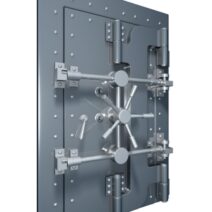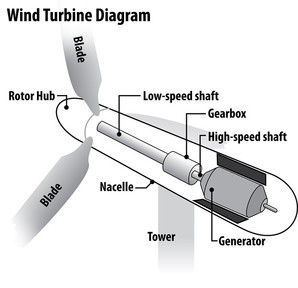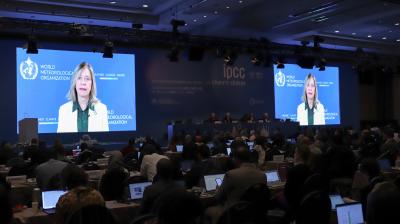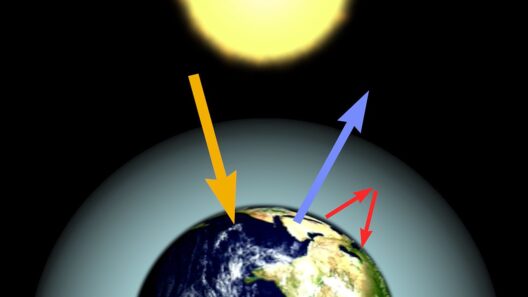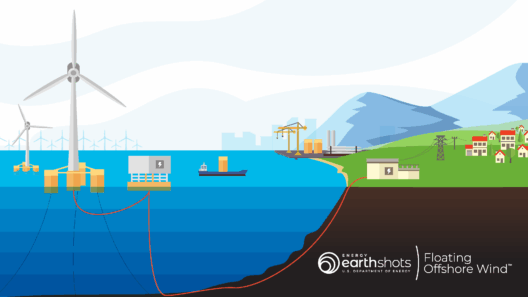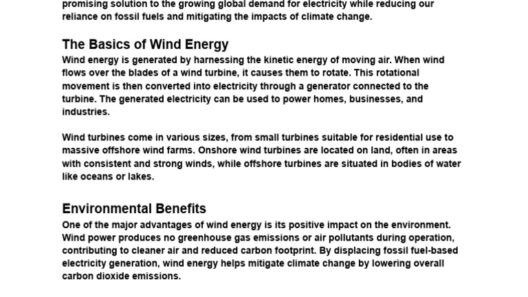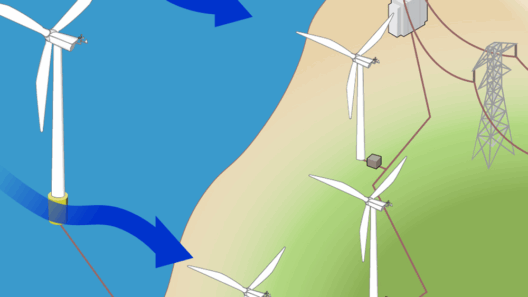Wind energy stands as one of the most promising renewable resources, capable of satiating global energy demands while mitigating environmental degradation. Yet, despite its burgeoning popularity, many remain oblivious to the intricate mechanisms that invigorate this clean energy source. In this discussion, we will peel back the layers of wind energy generation, elucidating its multifaceted process while exploring why it holds an enduring allure.
Moreover, as awareness of climate change escalates, a fundamental understanding of how wind power operates becomes increasingly essential. It is not merely the vastness of the wind farms that captures the imagination, but the sophisticated technology and natural forces that converge to harness wind’s potential. Let’s delve into the mechanisms of wind energy in a straightforward manner.
Understanding the Dynamics of Wind
At the heart of wind energy generation lies an interplay of meteorological phenomena. Wind is essentially air in motion, generated by the uneven heating of the Earth’s surface by the sun. Factors such as geographic location, temperature variations, and atmospheric pressure all contribute to this kinetic energy in the air. The fundamental question then arises: how can we capture and convert this energy into a suitable form for everyday use?
This intricate relationship between the sun, the Earth, and air pressure initiates the flow of wind. As warm air rises, cooler air rushes in to fill the void, creating breeze patterns that vary in intensity and direction. Wind energy is thus contingent upon these atmospheric currents and becomes a reliable source of power when harnessed appropriately.
The Anatomy of Wind Turbines
Central to wind energy generation is the wind turbine, an engineering marvel designed to convert the kinetic energy of moving air into electrical energy. The primary components include the rotor, nacelle, tower, and foundation, all playing crucial roles in the process.
The rotor, often adorned with sleek blades, is the most visible component of a wind turbine. As wind pushes against the blades, they rotate, transforming wind’s kinetic energy into mechanical energy. This conversion is made possible by aerodynamics — the blades are designed to create a pressure differential, enabling efficient rotation.
Once the rotor spins, it is connected to a shaft inside the nacelle, the compartment located atop the tower. The nacelle houses vital equipment, including the gearbox and generator. The gearbox amplifies the rotational speed from the blades, allowing the generator to produce electricity effectively.
Finally, the electrical energy generated travels down the tower via cables, queuing for integration into the grid. Thus, from the moment wind touches the blades to the moment electricity enters homes, we witness a seamless transition of energy that is both fascinating and vital for sustainability.
The Conversion Process: A Step-by-Step Guide
Grasping wind energy generation can be simplified into a step-by-step process.
First, wind enters the turbine and exerts force on the blades, causing them to spin. This motion activates the rotor and triggers the generator to begin its work.
Subsequently, mechanical energy is produced, facilitating the conversion into electrical energy through electromagnetic induction. As the rotor turns within the magnetic field of the generator, it induces an electric current, providing the energy needed to power homes, businesses, and infrastructures.
Lastly, this renewable energy is transmitted through the grid, accessible for use. This entire mechanism operates continuously under favorable wind conditions, presenting a sustainable alternative to fossil fuels and a beacon of hope in the fight against climate change.
The Enchantment of Wind Energy: Beyond the Mechanics
Beyond the technical aspects of wind energy lies its underlying charm, captivating human fascination. The sheer presence of wind turbines dotting the landscape evokes feelings of progress and sustainability. As they turn gracefully against the skyline, they embody a future free from reliance on finite resources.
Moreover, wind energy carries profound implications for ecological preservation. Unlike fossil fuels, the combustion of which releases harmful pollutants, wind energy offers a clean solution that diminishes carbon footprints. Wind power contributes to reduced greenhouse gas emissions and diminishes air pollution, ushering a new era of environmental consciousness and stewardship.
Additionally, wind energy signifies a shift towards energy independence. Countries investing in wind farms reduce their vulnerability to foreign oil markets, promoting local job creation and economic resilience. Communities can harness their natural resources, fostering a sense of ownership over their energy supply while simultaneously bolstering local economies.
Finally, the fascination with wind energy extends to the future possibilities it presents. Technological advancements continue to propel research and innovation, enhancing efficiency, durability, and scalability. Offshore wind farms, floating turbines, and energy storage solutions are on the horizon, promising to unlock even greater potentials for wind power.
Conclusion
Wind energy operates on a foundation of natural phenomena, harnessing the power of our atmosphere through sophisticated technology. From the initial dynamic of moving air to the conversion into usable electricity, the process is a testament to human ingenuity and environmental responsibility.
As we deepen our understanding of wind power generation, it becomes clear that this renewable resource is not merely a trend but a vital component of our energy future. With every spin of the turbine, wind energy carries the promise of sustainability, independence, and innovation, inviting us to engage with and reimagine our relationship with energy and the environment.

